Journey of Legends Day Tour
It’s the first of our day tours today. These are the only thing we booked from the US, as we figured it would be pretty disappointing to come all this way and find them sold out. We probably didn’t need to worry as private guides are readily available for only a bit more money, but we get some peace of mind and are locked in with a small group (8 people at most) rather than a bulk tour on a giant bus.
Our guide is native Rapa Nui and clearly proud of his culture, going into great detail about the legends surrounding the island. So little of the actual history is known because so few people survived to pass the stories on. While at it’s peak, about 15,000 people lived on Easter Island, by the late 1800s a shortage of resources, diseases introduced by European explorers, and raids by slave traders from the mainland had decimated the population, leaving just 111 (less than 1%). Of these, not a single one was of the class that understood the Rapa Nui written language, making the few records left undecipherable.
We start at collection of statues just outside of town, but with a completely new understanding of what we are looking at. When the island was first settled, it was divided into regions, each led by one son of the king. Over time, each region built monuments that they believe contained the spirits of their deceased leaders. The statues were placed on elaborate platforms, almost always facing inland, to keep watch over the people, and during a ceremony would have “eyes” of coral and obsidian added to “awaken” the spirit.
The main part of the statue was carved from the crater of Rano Raraku, one of the three volcanos that formed the island. Weighing as much as 80 tons, they were moved up to 14km (nobody knows exactly how) to their final destination. In many cases, another stone representing a topknot (the leader of a region was not permitted to cut their hair) was cut and transported from a separate quarry before being raised up and placed atop the head.
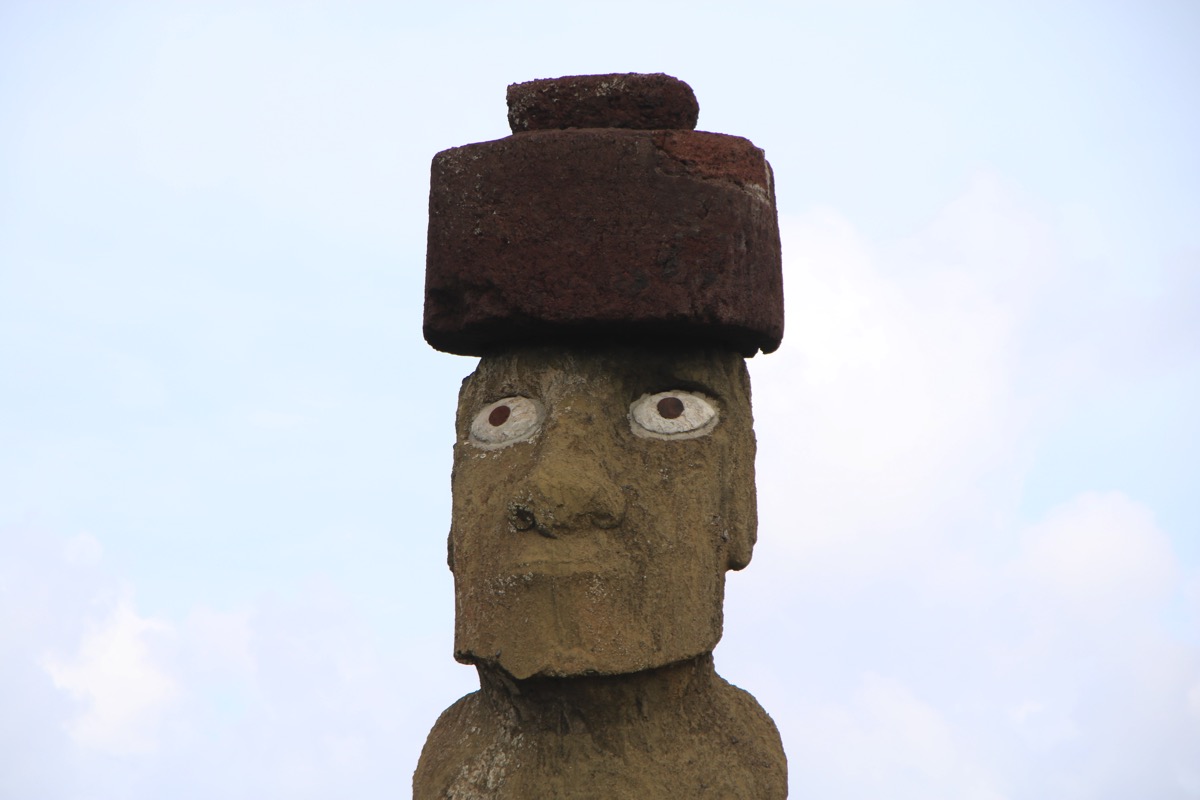
There are roughly 900 known moai, of which about a third made it to their final location atop a platform. Another third remain on the slopes of Rano Raruku, with the rest laying along the path from the volcano to the shore. The Rapa Nui believe the statues were moved standing up, and if one tipped over during transport, it was no longer fit to hold a spirit and was simply abandoned.
Our next stop is Ahu Akivi, a set of seven moai that are the only ones facing out to sea. These are said to watch over travelers and are in honor of the seven scouts who remained on the island following its discovery to await the arrival of the king.
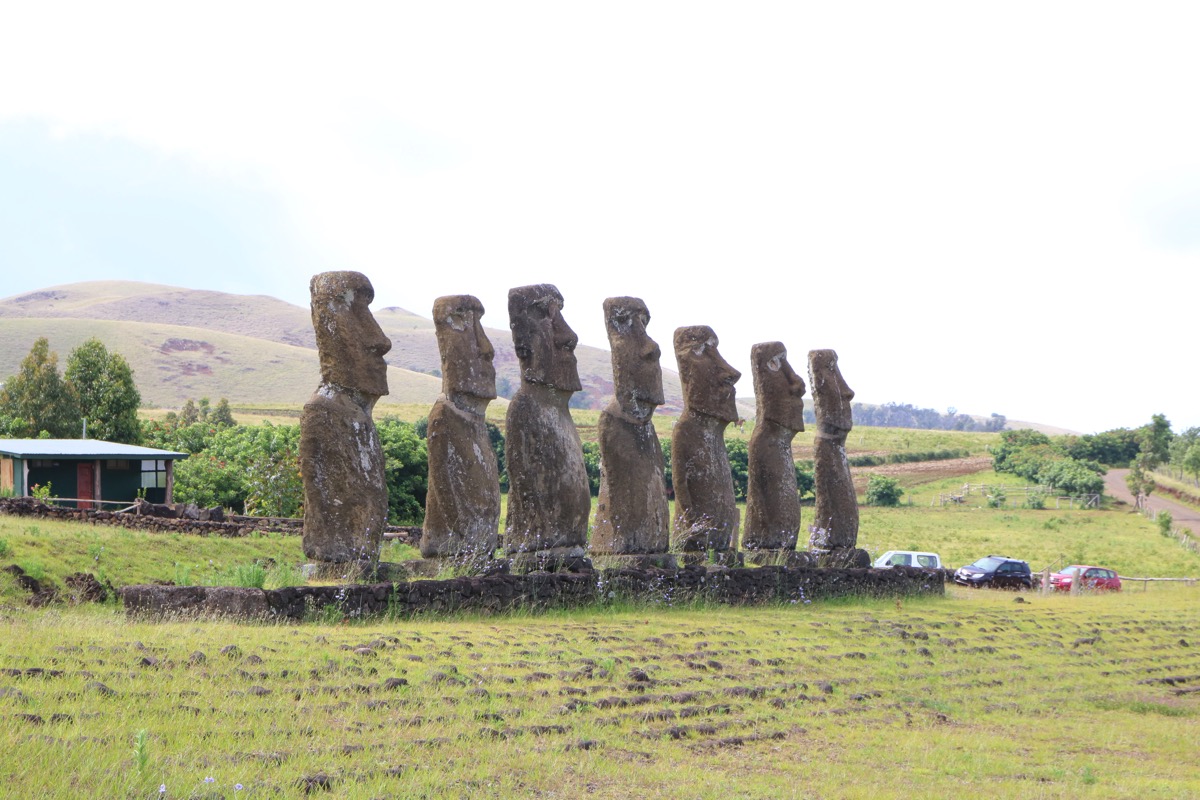
From there it is on to Puna Pao, where topknots were produced. Several examples of “work in progress” remain scattered around the site, and from this vantage point it is clear just how far these massive blocks needed to travel.
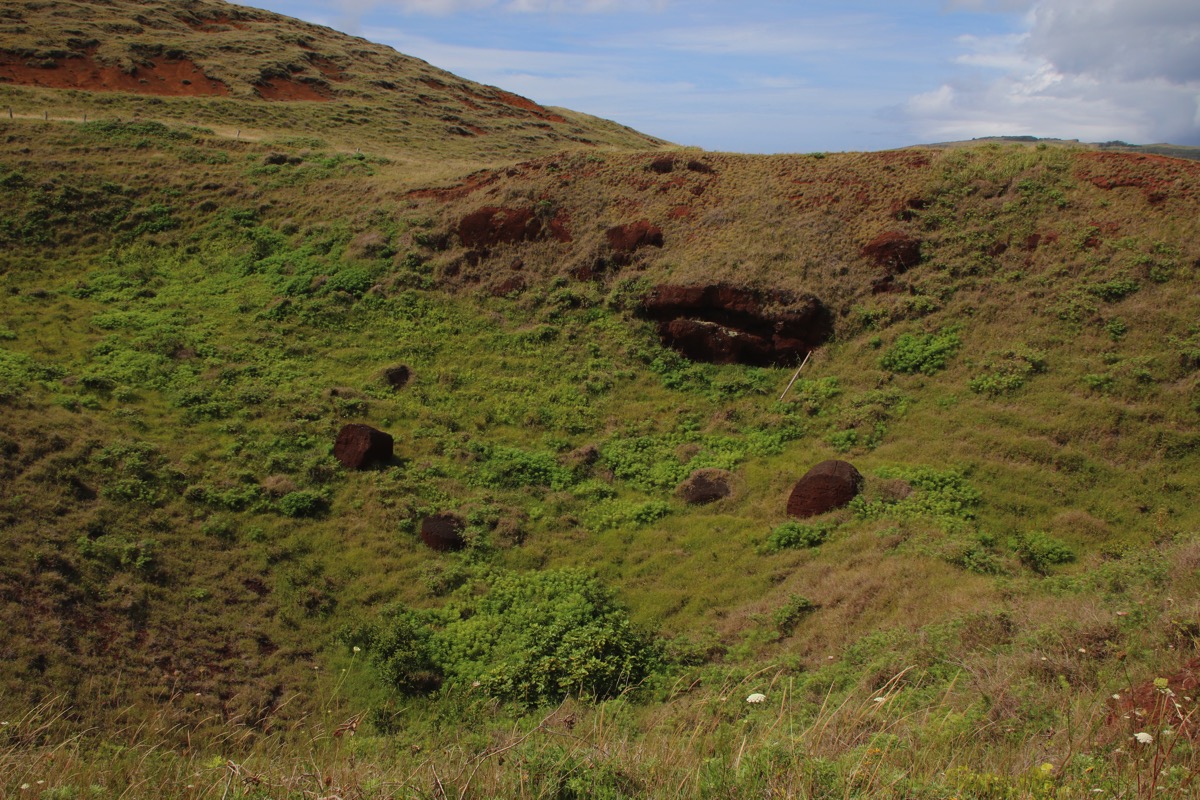
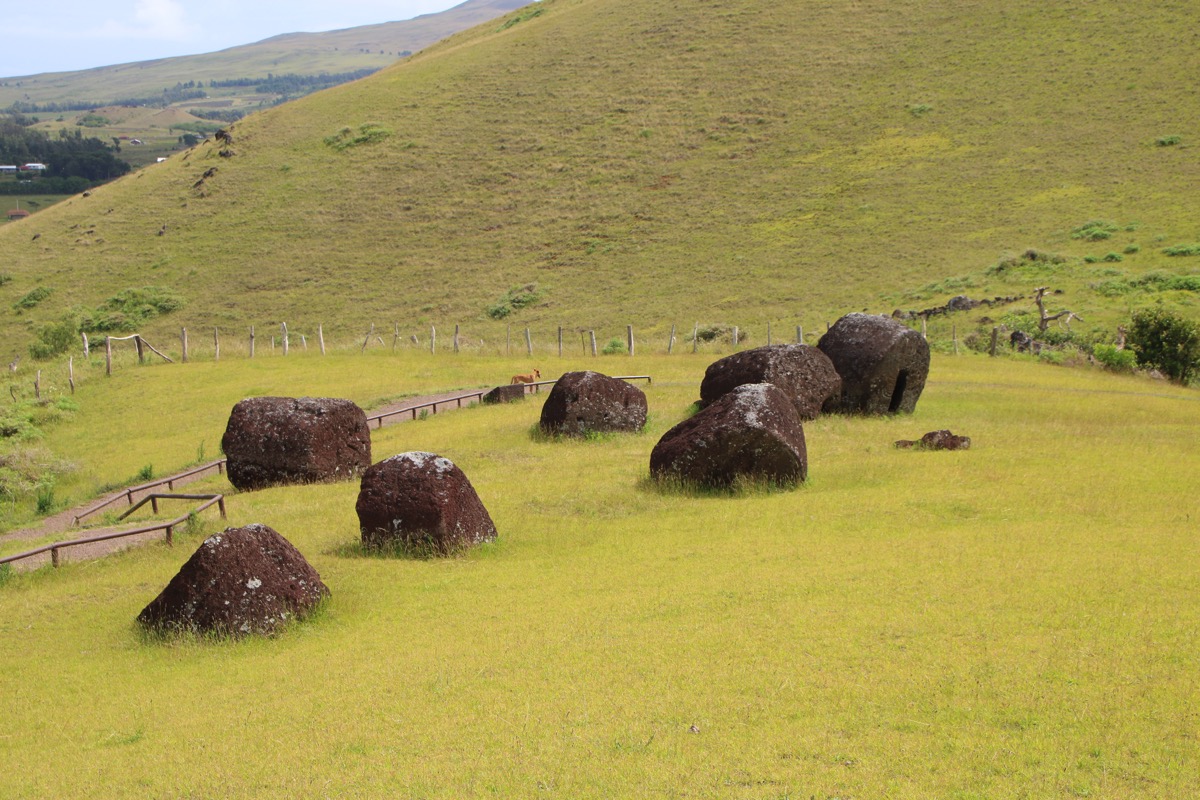
The tour then moves on to Ahu Vinapu. Here the moai haven’t been restored and still lay face down on the ground. According to our guide, as the Rapa Nui started to die off from diseases introduced by the Europeans, they grew angry with the statues, losing faith that they were able to protect them. The population split into one group that still worshiped the moai, and one group that did, soon devolving into a civil war. By the time it was over, not a single one remained standing.
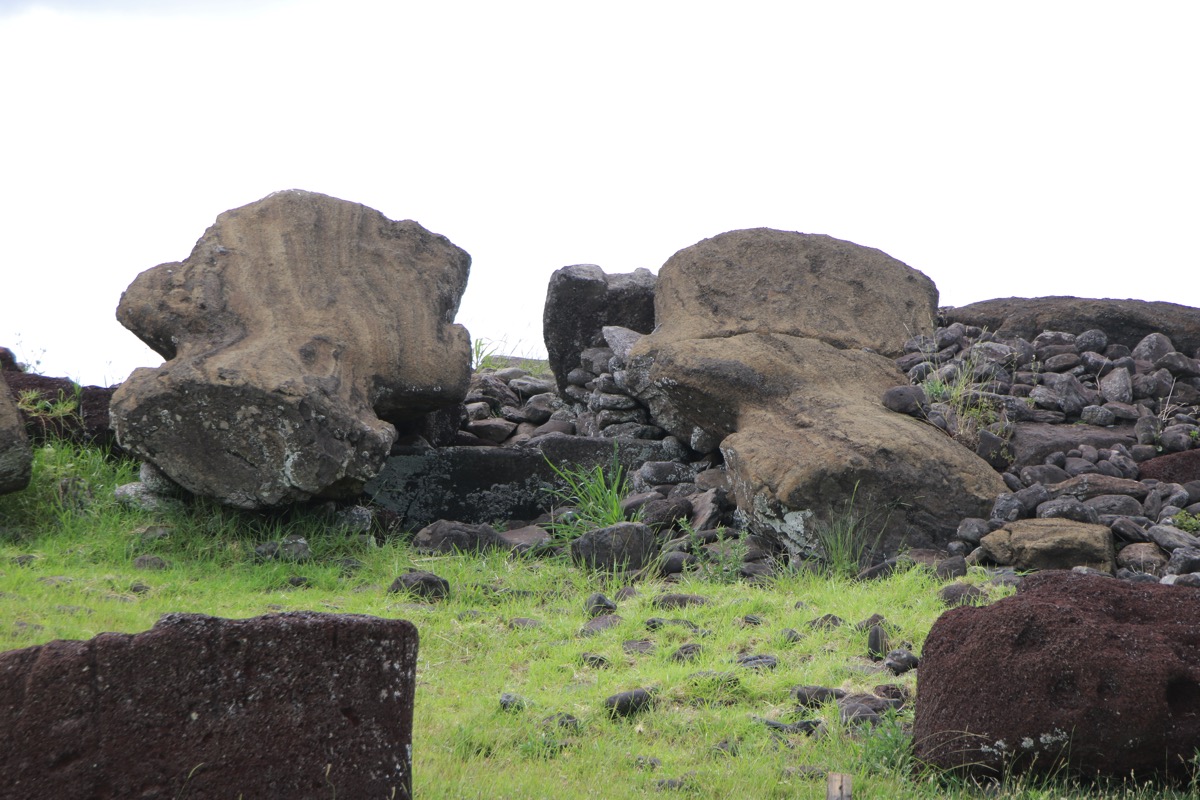
This site is also known for the precision stonework of the platform. It is like nothing else seen on the island, and would be right at home in Machu Picchu, leading some archaeologists to believe the Rapa Nui traveled as far as the mainland, trading knowledge with other advanced cultures like the Inca.
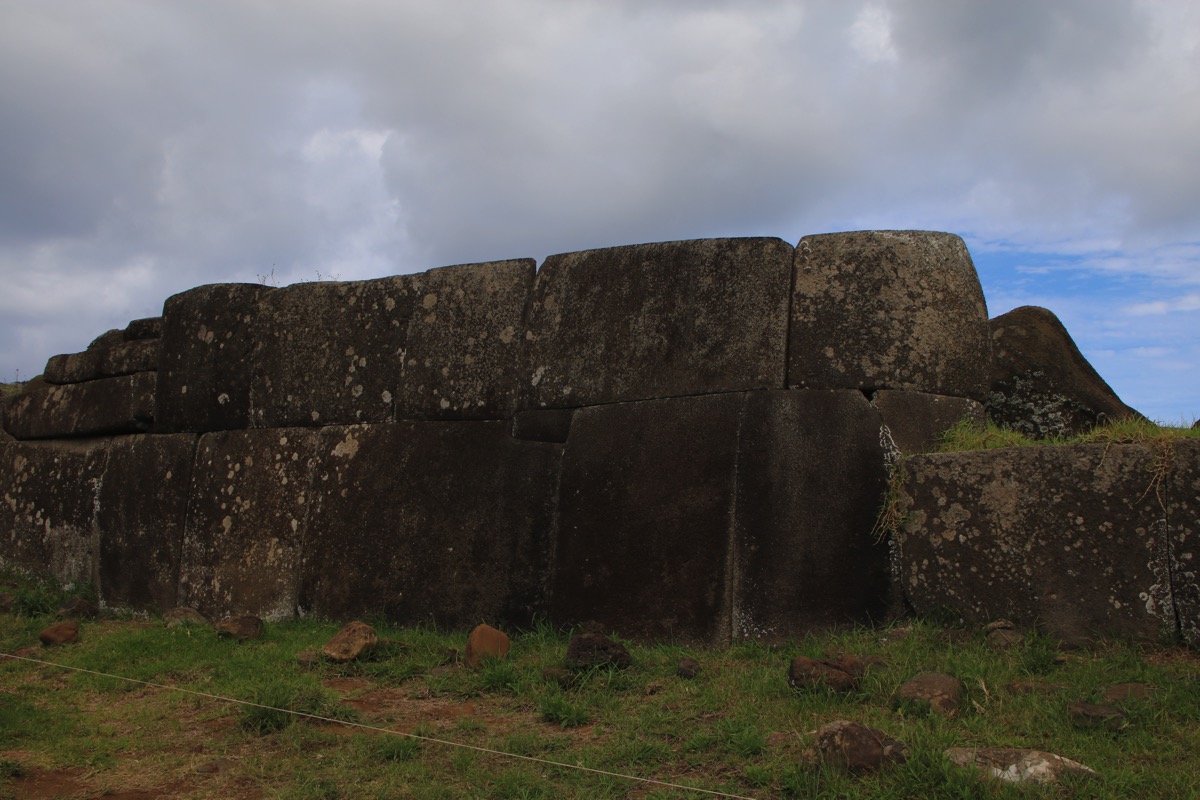
Our final destination is the ceremonial village of Orongo, situated on the rim of the Ranu Kau crater. Following the toppling of the moai, worship of the statues was replaced by the Birdman Cult, under which leadership of the island was determined by a competition each year. In the spring, each region nominated a representative live in Orongo village and train. In August, the contestants would climb down the volcano, swim through shark-infested waters to a small island, and search for the egg of a particular seabird. The first person to find an egg and return to Orongo village secured the right for his region to rule all of Easter Island until the following year.
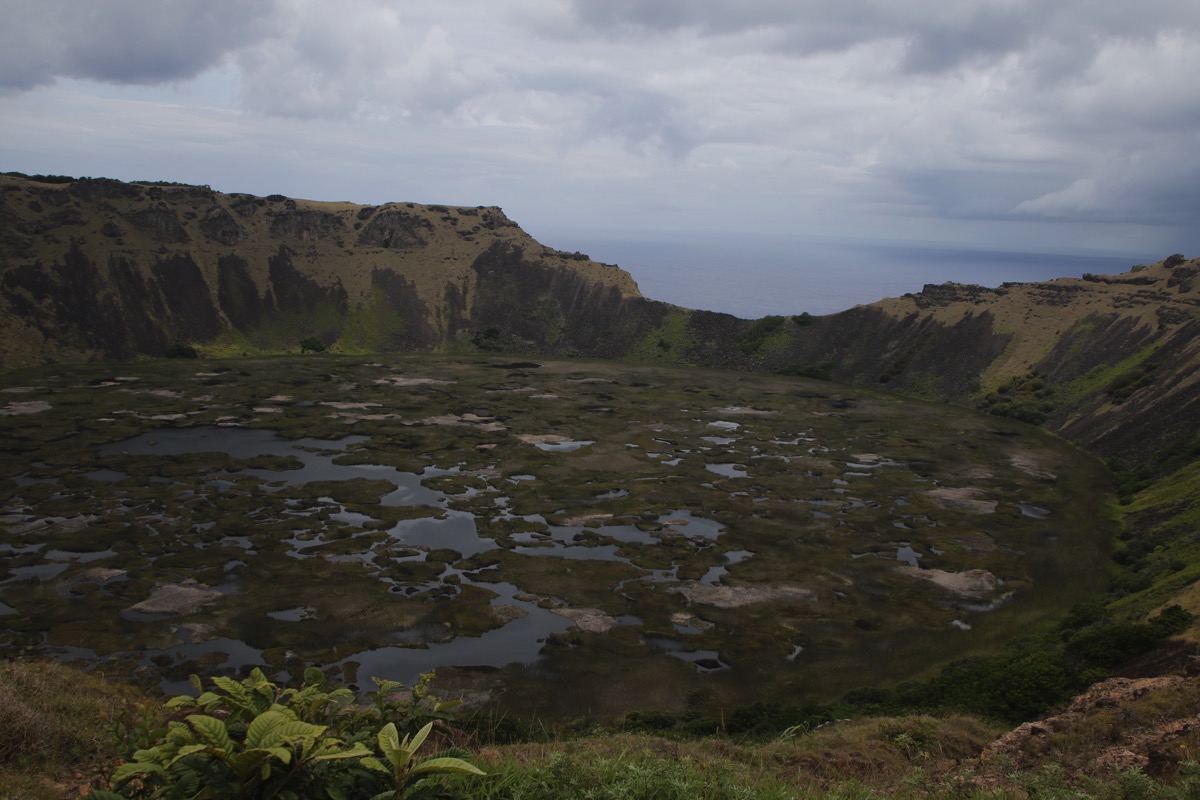
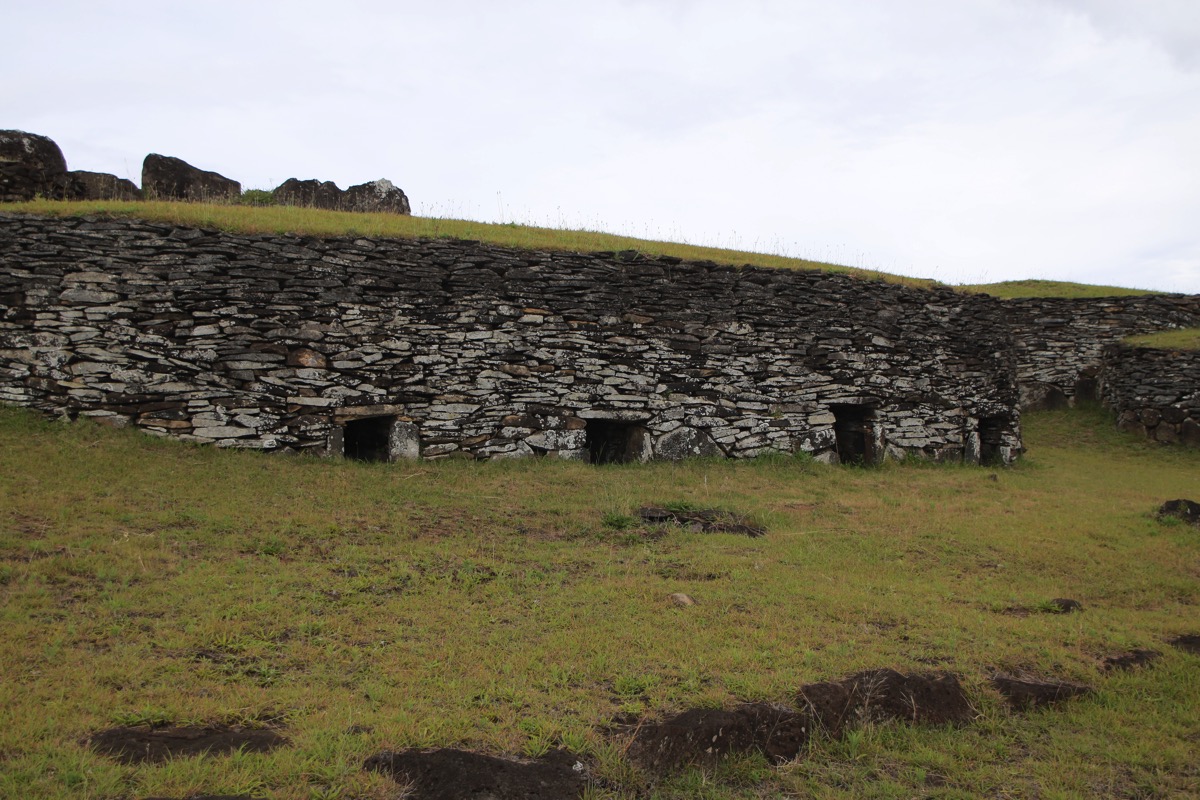
From the rim of the crater the views are fantastic, but some ominous weather is bearing down on us and it’s time to get moving.
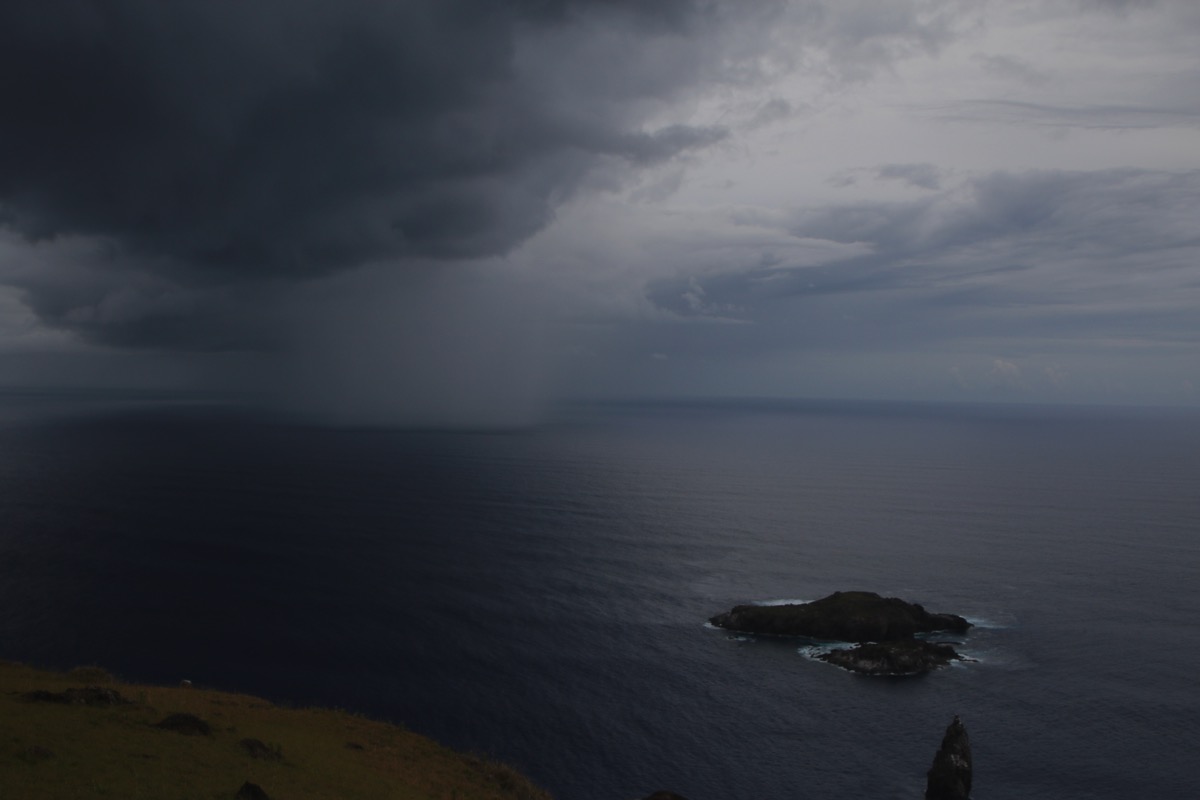
We wrap up the tour with a visit to the catholic church to see how much of the Rapa Nui symbolism was incorporated into the architecture and various carvings. The hold daily services here in Rapa Nui language that I think would be interesting to look in on, but I’m not sure we’ll have a chance to work it into our schedule.
Tomorrow, we’re back with the same guide to focus on the north half of the island.